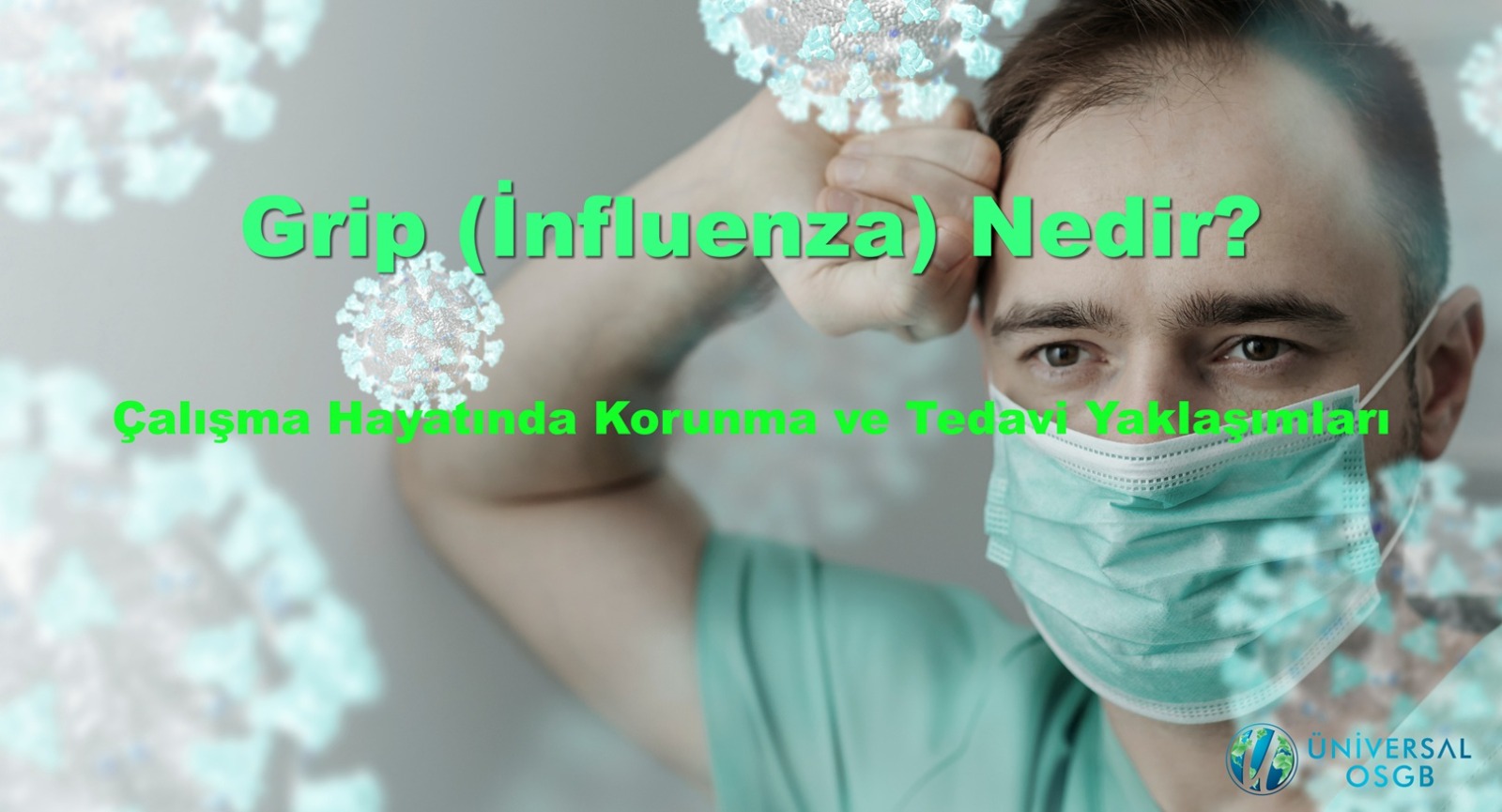
What is Influenza? Prevention and Treatment Approaches in the Workplace
What is Influenza? Prevention and Treatment Approaches in the Workplace
Influenza is a contagious respiratory infection caused by the influenza virus, which is particularly prevalent during the winter months. According to the World Health Organization, approximately 10-20% of the world's population is infected with influenza each year, and millions of people seek hospital care due to serious complications. In the workplace, influenza is a significant public health problem in terms of workforce loss, decreased productivity, and the risk of mass infection.
What is Influenza?
1. General Definition
Influenza viruses are enveloped, single-stranded, negative-polarity RNA viruses belonging to the Orthomyxoviridae family. They cause respiratory tract infections in humans and are one of the most common causes of epidemics/pandemics.
2. Types of Influenza Viruses
There are three main types that infect humans:
- Influenza A: The most common type, responsible for major epidemics and pandemics. Animal reservoirs include birds and pigs.
- Influenza B: Causes milder illness, usually leading to local outbreaks.
- Influenza C: Rare, causes mild upper respiratory tract infections.
- Influenza D: Found in cattle and pigs, there is no definitive evidence that it causes disease in humans.
3. Structural Features
- Envelope: Lipid-based, derived from the host cell membrane.
- Surface glycoproteins:Hemagglutinin (HA): Enables the virus to attach to the host cell.
- Neuraminidase (NA): Facilitates the virus's release from the cell and spread.
- M2 protein: Acts as an ion channel and is the target of antiviral drugs (amantadine, rimantadine).
- Nucleoprotein (NP): Envelopes the RNA and is used for typing.
- Segmented RNA genome: 8 segments in influenza A and B, 7 segments in C.
4. Genetic Characteristics
- It carries single-stranded, negative-polarity RNA.
- The segmented genome structure allows for reassortment (genetic change).
- This leads to the emergence of new virus subtypes (e.g., H1N1, H3N2).
5. Antigenic Structure and Changes
Antigenic Drift (Minor Change): Point mutations in the HA and NA genes → annual seasonal flu outbreaks.
Antigenic Shift (Major Change): Genetic material exchange between different types of influenza viruses → leads to pandemics (e.g., the 2009 H1N1 pandemic).
6. Replication Cycle
- Binding: HA attaches to sialic acid receptors on the host cell.
- Endocytosis: The virus is taken into the cell.
- Envelope fusion: With a drop in pH, the M2 protein is activated, and the RNA is released into the cytoplasm.
- Core replication: Negative strand → positive mRNA synthesis occurs thanks to RNA polymerase.
- Protein synthesis and assembly: Structural proteins are synthesized, and new virus particles are formed.
- Budding: With the help of the NA enzyme, the virus detaches from the cell membrane and spreads to new cells.
7. Epidemiology and Host Spectrum
- It can be found in many animals, such as humans, birds, and pigs.
- Birds are natural reservoirs for influenza A.
- Zoonotic transmission (e.g., avian influenza H5N1, swine influenza H1N1) can cause serious outbreaks in humans.
8. Clinical Microbiology
Incubation period: 1–4 days.
Diagnostic methods:
- Rapid antigen tests (RIDT)
- RT-PCR (Gold standard)
- Viral culture
- Laboratory findings: Leukopenia, mild lymphopenia may be observed.
9. Immune Response
Natural immunity: Interferon response, NK cells.
Acquired immunity:
Humoral: Anti-HA and Anti-NA antibodies (IgA is particularly important in mucosal immunity).
Cellular: Cytotoxic T lymphocytes eliminate infected cells.
Influenza and Risks in the Workplace
Workplaces are conducive to the rapid spread of the influenza virus due to being closed and crowded environments. Office environments, production facilities, shift workers, and those commuting via public transportation are at higher risk. Influenza in the workplace can lead to:
- Absenteeism
- Loss of productivity
- Chains of collective infection
- Increased risk of workplace accidents (due to fatigue and inattention)
Methods of Protection Against Influenza in the Workplace
Individual Protection
- Flu vaccine: Especially high-risk groups (people over 65, those with chronic illnesses, healthcare workers) should get vaccinated every year.
- Hygiene: Hands should be washed with soap and water for at least 20 seconds.
- Wearing a mask: People with symptoms of illness should wear a mask.
- Not sharing personal items: Cups, towels, computer keyboards, etc.
Workplace Precautions
- Ventilation: Ensure regular fresh air flow in enclosed spaces.
- Disinfection: Commonly used surfaces should be cleaned regularly.
- Leave policies: Employees with symptoms of illness should be encouraged to rest at home.
- Education and awareness: Employees should be informed about ways to protect themselves from the flu.
Flu Treatment
Influenza is usually a self-limiting illness; however, it can be severe in high-risk groups.
- Supportive Treatment
- Drink plenty of fluids
- Get adequate rest
- Take fever reducers and pain relievers (paracetamol, ibuprofen)
- Eat a balanced diet
- Antiviral Treatment
- Medications such as oseltamivir and zanamivir are effective when started within the first 48 hours.
- Antibiotics are ineffective against the flu and are only used if bacterial complications develop.
- Management of Complications
Influenza can lead to complications such as pneumonia, bronchitis, and asthma attacks, especially in the elderly, children, and those with chronic illnesses. Therefore, closer monitoring is required in high-risk groups.
Influenza is a significant disease in the workplace, highly contagious, leading to loss of productivity, and potentially causing serious health consequences. A comprehensive approach is required to protect against influenza in the workplace, including vaccination, hygiene measures, ventilation, education, and isolation of sick employees. Effective prevention and treatment methods protect employee health and ensure sustainable work productivity.
Üniversal OSGB
Occupational Safety and Worker Health Center


